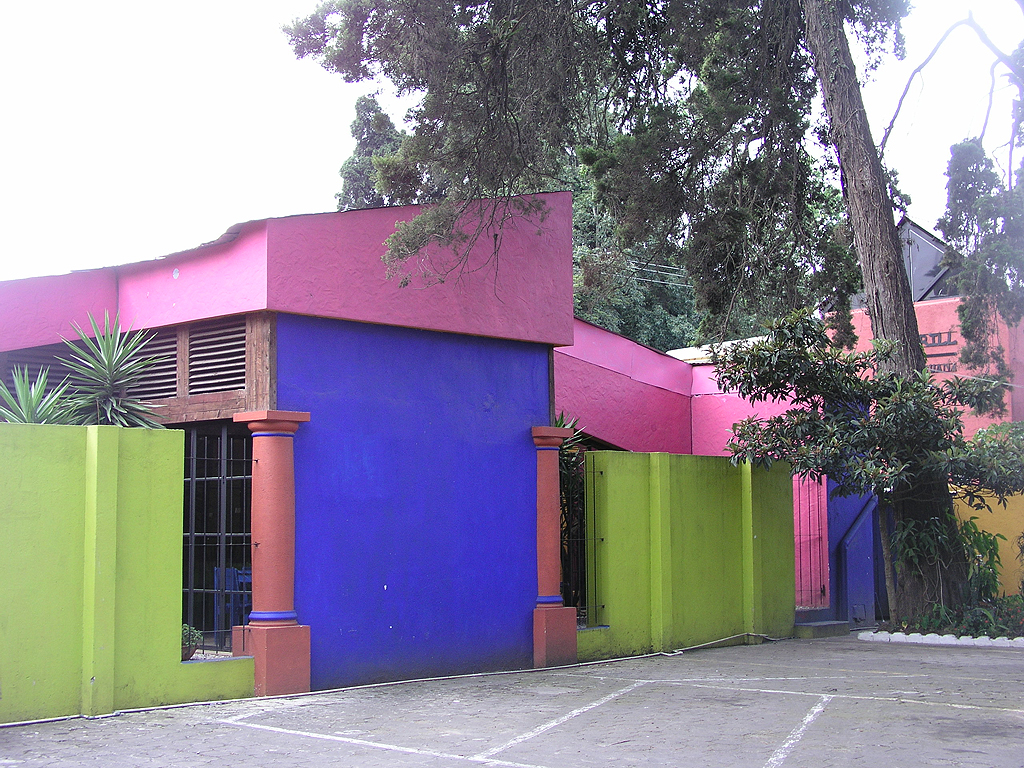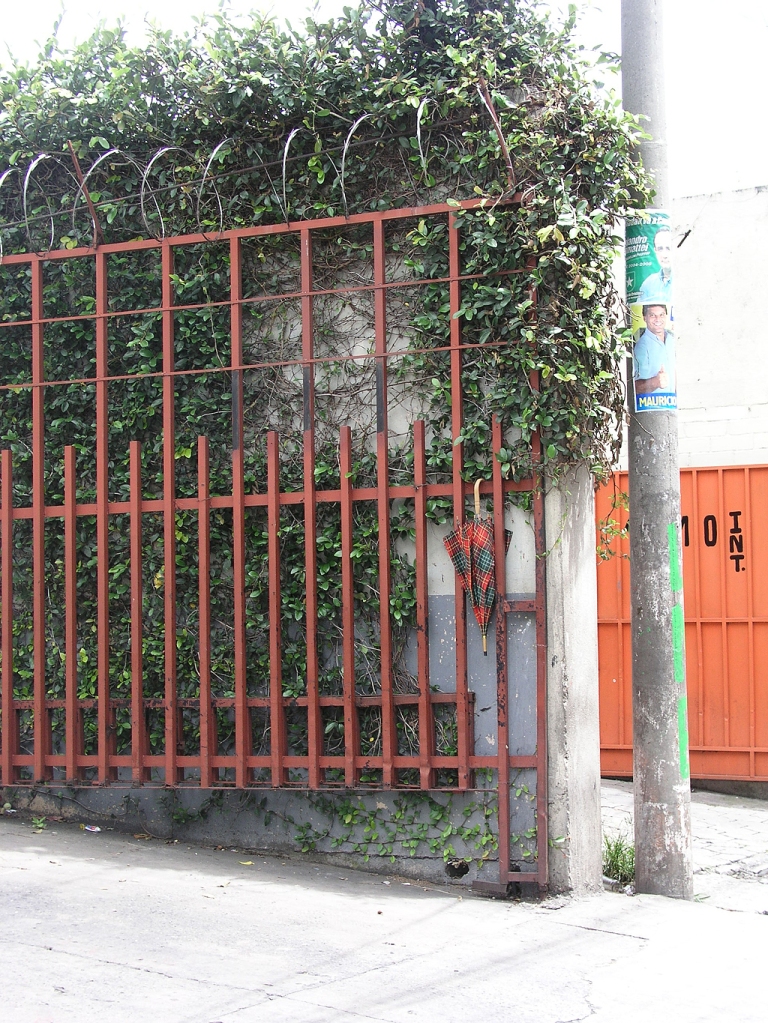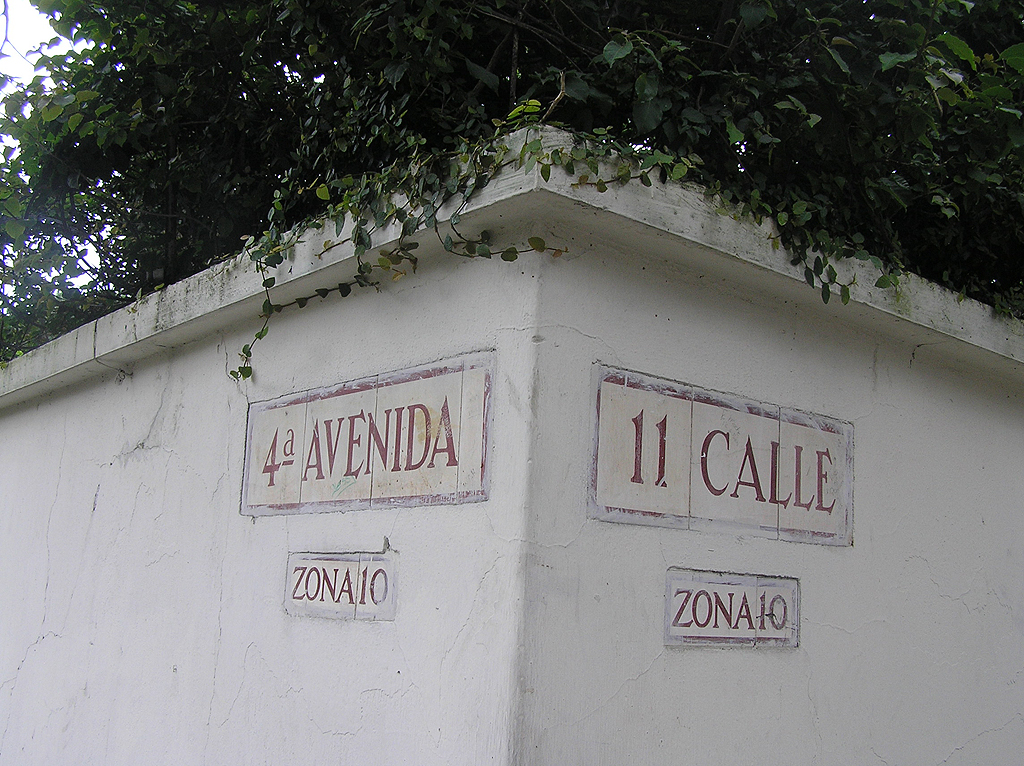On my first few days in a new place, everything strikes me as fresh and fascinating, then becomes more familiar and taken for granted. So when I travel, I try to venture out early in my visit to immerse myself in the sights and sounds. There is something invigorating about strolling through streets and scenes I have never seen before, knowing I will not meet anyone I know there.
In fall of 2003, I moved to Guatemala City to teach at an American International school. Rising with the sun my first morning, bursting with anticipation, the bright light of my new country pouring in, spotlighting the flowers on my hotel room table, I rushed out for a walk. Mindful of my poor sense of direction, I rounded blocks, trying not to get lost, while taking in the vividly painted buildings and hand lettered signs, gracefully arching trees, and flowering vines and bushes.

Zone 10, also known as Zona Viva, the lively section of Guatemala City where nightclubs, hotels, and restaurants abounded, was abuzz with people going to work and starting their day—not at all like the seedy neighborhoods depicted in tour books and travel advisories, which cautioned spending as little time as possible in the capital. In this urban landscape, high-rise apartments, office buildings, and hotels towered above little shops. Bunched and tangled communication lines crisscrossed like spider webs. Traffic blared from compact cars and dented old pickups, horns honking, mufflers not required. The volcanoes ringed by clouds that surround the city—Agua, Fuego, and Pacaya—were seldom visible, obscured by haze, cloud, and pollution, but on that day an occasional glimpse appeared like a blue mirage floating over the city streets, an elusive promise of new places to explore—a good omen.




Lurid magenta and violet bougainvillea tumbled over walls, white lilies sprang from the ground, and orange birds of paradise pointed like fingers in every direction from their protective sheaths of green. Walls were painted in riotous colors: warm terra cottas, mustard yellows, intense blues, variegated as if sponged onto surfaces. Signs in bold letters, some painted directly across outer walls of buildings, screamed about their services. Shoeshine boys, their stools set up in the dirt between sidewalk and curb, offered to shine my sandals. Vendors selling food and other goods were perched in little makeshift stands on the surprisingly litter-free streets, or just sitting on the ground with their baskets. Fragrant scents of flora and greenery in the humid air alternated with choking odors of car exhaust, the stench from occasional sewer openings, and streams of urine on the sidewalk.





Locked gates and uniformed guards fronted most of the buildings. Security guards hefting enormous automatic weapons, alarming and intimidating, greeted me politely. It was difficult to get a feel for the places where people lived in this city, since most of the residences were hidden from sight behind high walls, topped with spiraled circular razor wire, points of sharp rock, or embedded pieces of colored glass. At first, they appeared intentionally decorative, but then their forbidding message was revealed.

Retired school buses from the United States sported bright colors, as did everything in Guatemala. They were color-coded according to their destination, probably in consideration of the high illiteracy rate. Each was uniquely decorated with names painted across the side in wild fonts, with a woman’s name typically written over the front window—the bus driver’s wife, girlfriend, or mother—along with religious or comical drawings or phrases along the side. Along more rural routes, it was not unusual for people to bring small livestock on the local buses; hence their “chicken bus” nickname. Chicken buses, for all their color, trailed clouds of black smoke spewing from the exhaust. I had read that breathing in the pollution of Guatemala City was akin to smoking two and a half packs of cigarettes a day, and buses were a major contributor.

A well-tended profusion of flowers and plants, including a few huge-leafed banana trees, surrounded four white rectangular buildings, each housing four units, each with its own entrance to the shared garden. This is where I found a place to live, at the Santa Clara Apartamentos in Zone 10. I chose an upstairs two-bedroom apartment, unfurnished except for a bed supplied by the school. I was charmed by the balcony spilling over with orange trumpet flowers. I bought some used furniture from teachers that had moved on, along with some hand-carved wooden pieces and wicker chairs from sidewalk and roadside vendors. With the occasional mild earthquake, the flimsy wooden computer desk I bought from the outgoing technology teacher would vibrate from side to side. I purchased a few kitchen luxuries: a coffeemaker to brew rich, flavorful Guatemalan coffee, and a blender to make the freshest fruit smoothies I’ve ever had.




This piece, Prague, and Fuchū, Japan are about places I lived when I was teaching abroad. This is an excerpt from my book, Go Wherever You Want (working title).
THANK YOU to YOU!

In a little over a year, my audience has grown to over 10,000 views. This blog replaced an older one and includes some of those stories and photos; some of you have followed me to this site. My warmest thanks to all of you who have read, commented, or just looked at the photos on my site. I appreciate you!
And a grateful thanks to author and fellow blogger Martha Engber who shared my story and link on Facebook and Instagram. In addition to her award-winning books, Martha lends her kind support to other writers and bloggers. Visit Martha’s site at marthaengber.com and blog at https://marthaengber.wordpress.com/.
Please do not download or reproduce images from this site. ©
Your comments are welcome!
Popular posts/stats/categories
Email me at: Ruth@RuthRosenfeld.com

Vibrant colors in the flowers and the painted walls. I remember the seriously armed guards in Chile when I was there. I found it intimidating at first and then just go used to it. Thanks for all these interesting photos.
LikeLiked by 1 person
Thank you, Anne, for visiting. That seems to be the case in many of the Latin American countries, where organized crime is rampant. It’s amazing what you can get used to!
LikeLiked by 1 person
South America has a different rule of law than we have in North America and Britain. Also I was there when Pinochet was still in power and his era was being met with huge protests and a curfew etc.
LikeLiked by 1 person
Lovely! Zona Viva looks to be a vibrant neighborhood in Guatemala City. I hope you had an enriching time teaching there and exploring the beautiful country. I look forward to other posts, perhaps on your time there!
LikeLiked by 1 person
Thanks for visiting and commenting, Rebecca! I spent three years there, teaching and people stories are in my book. (Hoping to get published some time soon.)
LikeLiked by 1 person
I like the shot of the old busses 🙂
Succes with the teaching and have a lovely weekend.
Kind regards,
Rudi
LikeLiked by 1 person
Thanks, Rudi! I taught there for three years and loved that neighborhood.
LikeLike
A colourful place for sure. It is like paint companies send all the colours they can’t sell here. Somehow, it all works. Thanks for sharing Ruth. Allan
LikeLiked by 1 person
I love that comparison! The vibrant colors seemed to reflect the tropical environment. Thank you, Allan!
LikeLiked by 1 person
I love that colourful building (a house?) in your second shot – gorgeous!! And I can never resist photographing bougainvillea wherever I go 🙂 Your apartment looks lovely, I can absolutely see why you chose it!
LikeLiked by 1 person
I believe it was a house, couldn’t resist the photo. I lived there for three years and loved the neighborhood. Some great little restaurants, some international foods.
LikeLiked by 1 person
Thoroghly enjoyed. And I wanted more.
LikeLiked by 1 person
Thanks so much, Dave! I’m glad you enjoyed it. There is a lot more, but I’m hoping to have the book published someday. (Looking for an agent, prefer to traditionally publish, but we’ll see.) Teaching stories, people stories, travel within the country. I’m keeping to just the travel aspect in the blog, for now. I lived in that apartment for three years, loved the neighborhood.
LikeLiked by 1 person
Thoroughly…
LikeLike
Glad to see this city thru your eyes. Despite the pollution, there’s a lot to like. Do the volcanoes ever erupt?
LikeLiked by 1 person
Yes, there are active volcanoes. I have hiked Pacaya, and it erupted several times when I was there. You could see smoldering areas still. Villages on the sides of volcanoes have been wiped out.
LikeLiked by 1 person
Your photos seem more tranquil than your story, but all of it is an interesting read. I find the photo of the well-dressed customer checking out the goods while the street vendor reads her newspaper in the background somehow charming.
LikeLiked by 1 person
Thank you, Dave, for reading and commenting! My photos and story are not always synced. 🙂
LikeLiked by 1 person
I love all the colour in and around the city. It definitely adds a positive energy and vibe. Congrats on passing 10K all-time views!! That’s fantastic!
LikeLiked by 1 person
Thanks for being a regular reader! I’ve enjoyed following your blog through the parks.
LikeLiked by 1 person
This was such a lovely read. It brought back many memories of my time in Guatemala in Antigua and San Pedro La Laguna – the hidden homes, the vivid colours, the screaming bougainvillea, the chicken buses. Such a rich culture.
Your apartment looks beautiful. I know I’d have loved that balcony.
Alison
LikeLiked by 1 person
Thank you, Alison, glad you enjoyed it. I spent a lot of time in Antigua and Lake Atitlan, and on that balcony!
LikeLiked by 1 person
I can see why you chose that apartment – it looks lovely.
LikeLiked by 1 person
Many congratulations on the upcoming book, Ruth. You certainly have the most wonderful travel tales to share. I loved the little bit of Guatemala that I visited from Belize. Those buses looked wonderfully maintained despite their pollution. We reckoned that 2 years in Cairo probably took 2 years off our lifespan with the pollution – no regrets. I have seen the barbed wire and glass set in cement in parts of Mexico but not in the rural Yucatan area. For the most part, nobody has anything worth stealing!
LikeLiked by 1 person
Thank you, Kerry, but that might be a bit premature. It is a personal accomplishment, at least, so far. True about the poor rural areas, but violence is sometimes under the surface and they feel more protected with those measures.
LikeLiked by 1 person
I was brought up in a public housing estate in Glasgow and we had barbed wire and glass EVERYWHERE! Curiously, I didn’t really feel unsafe – it was just normal.
LikeLiked by 1 person
Oh my, you have had an interesting life too, Kerry. It’s amazing what one can get used to.
LikeLiked by 1 person